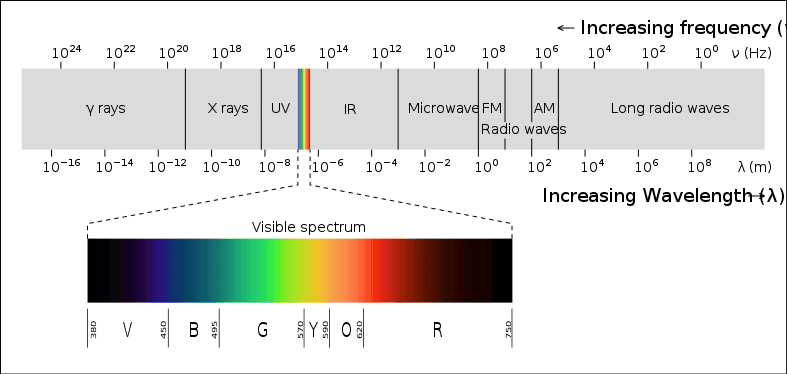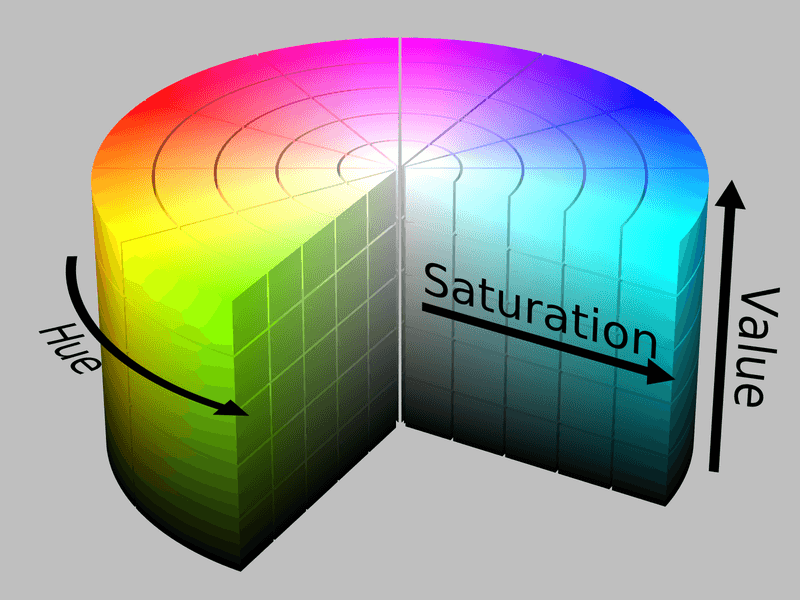Shader Basics - Color
In order for computers to have the ability to show color, they need a way to represent the color values which can be used to show the necessary colors as well as store them. This value is then used to color the pixels that form the individual blocks of a display.
How are colors represented in computers?
Computers represent pixel colors through numbers, and have four color values (or channels) they store per pixel - red channel (R), green channel (G), and blue channel (B). An alpha (transparency) channel (A) can also be used, but is optional.
Generally computers represent each channel using an 8-bit number, resulting in the color of pixel being represented using upto 32 bits total. However, with HDR (high dynamic range) the color of each pixel is represented in at least 30 bits (without alpha), making each channel use a 10-bit number.
The number stored for a particular channel represents the brightness of the color that the channel represents. So if the number for the red channel is 0, that means there is no red in the final color of the pixel. At 255, the red channel is at maximum brightness, showing the brightest red possible.
How are colors represented in shaders?
Colors can be represented using vectors, like vertices. The size of the vector depends on the number of channels that are required to represent the color, with size four providing the most information.
Current computer displays require colors of pixels to be provided with red, green, and blue channels. So colors values that use more or less channels have to be converted into this format. Shaders accept colors with all four channels (RGBA), and then convert that into RGB.
While each channel of a color is represented as an 8-bit number, in shaders each channel is represented using a 32-bi floating point number. The GPU later converts this to the representation used by computer displays.
Why are colors represented as a combination of red, green, and blue?
Our eyes have three types of "cones" that activate when light consists of certain wavelengths of colors - L cone, M cone, and S cone.
The L cones is most sensitive to light of long wavelengths of visible light (hence the name) and, similarly, the M and S cones are sensitive to medium and short wavelengths of visible light respectively.
In the visible light spectrum, red is a color that has a long wavelength, green is a color of medium wavelength, and blue is a color of short wavelength.
This means that when L cones activate, they make our brains see the color red, when M cones activate we see the color green, and when blue cones activate we see the color blue.
This generally allows us to see a wide range of the visible spectrum of light. To understand why, lets look at what the spectrum of visible light is.
If you look at the image, you'll see that the colors red and blue lie around the edge of the bisible light spectrum, while the color green is somewhat in the middle.
If varying amounts of these colors are mixed together, they are able to produce colors that lie between them as well. For example, yellow can be produced using green and red.
The fact that our eyes see all colors using these three "primary" colors is why computers do the same, as it allows them to show color that suits our vision the best.
You can read more about how are eyes see color from this Wikipedia article on cone cells.
Side-note: Our eyes are also most sensitive to the color green, meaning we can notice differences between shades of green more easily than with red and blue. This fact is also taken advantage of in computer technology.
Can color only be represented as RGB by computers?
While colors are generally represented using RGB by computers, and are also how humans see colors, it is not the only way colors are represented.
While RGB is a representation that is easy for computers to understand and work with, and also how our eyes generally see color, it isn't very intuitive for humans to understand.
There are two alternate representations that are also in use - HSL (hue, saturation, lightness) and HSV/HSB (hue, saturation, value/brightness). These representations are much closer to how we perceive color making.
Let's look at what the components of these representations mean:
Hue
Hue is the colors from the visible light spectrum. It is a 360 degree circle that starts with red at degree 0, then goes to green at the 120 degree mark, then to blue at the 240 degree mark, and then wraps back to red at 360 degrees.
This allows all colors to be represented in their bare form, and places complementary colors opposite to each other.
Saturation
Let's take up the example of tea and sugar. When there is no sugar in the tea, the tea tastes just as it is in its pure form. This means that there is 0% concentration of sugar in the tea.
As sugar is added to the tea, the concentration of sugar increases, which sweetens the tea. Eventually, when the sugar reaches the concentration of 100%, there is no more tea present, meaning that what remains is just sugar.
Saturation is similar in concept, where the tea is the final color, the sugar is the selected hue, and the concentration is the saturation of the hue.
When there is no hue in the color, the color is white, which is its pure form. As the saturation of the hue increases, the color of the hue adds up more and more to the final color. At 100% saturation, all the remains is the actual color value of the hue.
Value/Brightness and Lightness
Value is similar to saturation, but starts from black. As the value of the hue is increased, the brightness of the color increases, which allows a brighter shade of the color to be shown.
At full value, the hue is at its highest brightness, which is the raw color of the hue.
While value/brightness only stops at the final color of the hue, the lightness component can go even brighter and brighter, which makes the hue transform from its raw color into white.
This property allows the color white to be represented in two ways through HSL - by zeroing out saturation or maxing out lightness.
Converting between HSV and RGB
While colors can be created using the HSL or HSV color model/space, this representation needs to be converted into the RGB color model/space, which is what computers understand.
There are algorithms available online that provide detail on the formula used to perform these conversions as well as functional code that can be used.
Here is a Stack Exchange answer that provides GLSL implementations of functions that can convert RGB color to HSV and back again. This page and this page show the formula that is used to convert from RGB to HSV and HSV to RGB respectively.
HSV can be used over HSL as it is generally simpler to understand and use for most people.
Additional Notes
In future chapters, we will primarily work with RGB(A) colors and textures, but this knowledge is available if you wish to work in HSV color-space if it simplifies dealing with color.
Many color pickers and wheels generally provide a HSV-type interface, but also allow exporting results into RGB. This should alleviate the requirement for remembering the conversion.
The information about the variety of color spaces in use can still be useful in certain cases, such as when you wish to provide to modify colors to users, since color models such as HSV and HSL are more intuitive, as discussed.
Summary
- Computers represent colors using numbers. Colors are represented using red, green, and blue channels (optionally with an alpha channel).
- Each channel is generally represented using an 8-bit number, meaning the color of a pixel is represented using 24-bits, or 32-bits (including the alpha channel).
- Although numbers are generally represented using integer numbers, in shaders they are represented using floating point numbers. The conversion from floating point to integer is done by the GPU.
- Colors are represented using RGB because it is a form of how humans see color, and is also easy for computers to understand.
- However, RGB colors aren't intuitive for humans to work with. Due to this, other alternate representations are used - primarily HSV and HSL.
- When working with colors in the HSV or HSL color-space, they need to be converted to RGB so that computers can actually display them.

